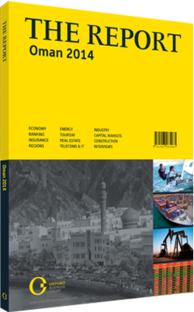OBG talks to Pankaj Khimji, Partner-Director, Khimji Ramdas

Interview: Pankaj Khimji
How are Oman’s shifting demographics influencing the retail sector?
PANKAJ KHIMJI: There are two major shifts occurring in Oman’s demographics. The first is the youth, who are better educated and better travelled than previous generations. They have been exposed to various cultures from the East and the West, and this has had a significant impact on what they demand and expect from the retail industry in Oman. The second shift comes with the growing number of expatriates now living in Oman. This segment of the population has a particular idea of what retail shopping should provide and include. Essentially, what both the youth and expatriates are looking for is a more organised retail industry. High street stores are continuing to shrink, while indoor shopping malls are growing. New retail models, such as integrated tourism complexes (ITCs), are also beginning to emerge. A prime example of a successful and popular ITC is The Wave, Muscat, which combines luxury residential properties, retail outlets and dining facilities all along Muscat’s coastline. This is the future of retail in Oman and what the consumers want.
Which retail segments are best-positioned to take advantage of Oman’s ongoing tourism growth?
KHIMJI: To begin with, tourism and retail must establish a focused approach for collaboration and integration. If the traditional high streets wish to take advantage of the growth in tourism, then they are going to have to revive themselves. This means becoming more attractive and tourist-friendly by offering products and experiences that meet consumer demands.
The next parts of the retail industry that can take advantage of tourism growth are the souks (open-air marketplaces) and Old Muscat. These places are filled with culture and rich history. Tourists want to be exposed to and experience local traditions and customs. The souks and Old Muscat provide exactly that. Oman can learn from places such as Singapore and how the old town was used there to cater to tourists. What will tie these retail segments and tourism together is the development of waterfront shopping. For example, according to the Ministry of Tourism, more than 250,000 cruise tourists visited Oman in 2012. These passengers have the funds and intentions to explore and spend money. To fully take advantage of this opportunity, Oman must start preparing itself accordingly. Port Sultan Qaboos is an ideal location for first impressions, and developing the shops on the waterfront is the perfect place to start. Once again, the collaboration between retail and tourism is vital and in the best interest of consumers, retailers and tourists.
What operational challenges are retailers located in ITCs encountering, and how are they adapting to these issues?
KHIMJI: Retail is poised to be one of the largest employment sectors in Oman and can absorb some of the tens of thousands of Omanis entering the workforce every year. There is an acute shortage of cashiers, product salesmen and semi-skilled workers to take advantage of these employment openings. Further developments in ITC projects will create many new employment opportunities for Omanis, and when completed, these projects will have the potential to become key long-term employers for the sultanate’s career seekers across a variety of sectors, from retail, marketing and sales to catering and entertainment.
However, the greatest challenge is hiring, training and retaining locals. As the retail industry continues evolving, proper technical and vocational education will be crucial for human capital development. The private sector has taken its own course of action and is developing training courses for incoming employees. Future employees must be well-rounded, with both soft and hard skills. This means technical training and IT courses, and nurturing the appropriate business skills required. Employment opportunities lie in the retail sector, especially in ITCs, and we want to prepare the local workforce to meet the demands of a modern retail world.
You have reached the limit of premium articles you can view for free.
Choose from the options below to purchase print or digital editions of our Reports. You can also purchase a website subscription giving you unlimited access to all of our Reports online for 12 months.
If you have already purchased this Report or have a website subscription, please login to continue.

